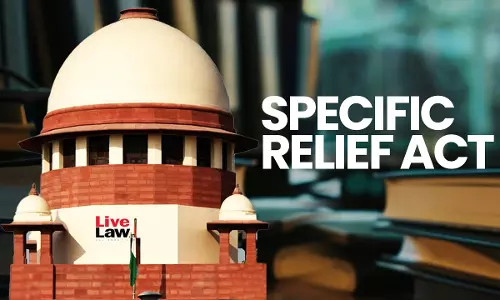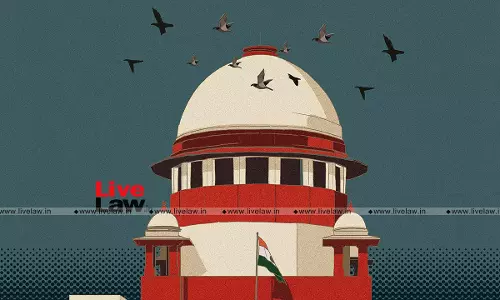Supreme Court To Hear Plea Of Acid Attack Survivors' Challenges To Complete 'Live Photograph' Requirement Of e-KYC Process

The Supreme Court yesterday (November 13) briefly heard a petition seeing guidelines for an inclusive KYC (Know Your Customer) process for acid attack survivors and persons with permanent eye damage. A bench of Justices JB Pardiwala and Pankaj Mithal heard the petition on which the Court issued notice on May 17. In this, petitioners sought directions to the Central authorities for...
The Supreme Court yesterday (November 13) briefly heard a petition seeing guidelines for an inclusive KYC (Know Your Customer) process for acid attack survivors and persons with permanent eye damage.
A bench of Justices JB Pardiwala and Pankaj Mithal heard the petition on which the Court issued notice on May 17. In this, petitioners sought directions to the Central authorities for framing appropriate guidelines providing for alternative methods to conduct the Digital KYC/e-KYC process for acid attack survivors suffering from permanent eye-disfigurement or eye burns, with the view to make the Digital KYC/e-KYC process more accessible and inclusive towards all disabled persons, particularly acid attack survivors.
The petitioner prayed that the Centre clarifies the meaning and interpretation of 'Live Photograph' as mentioned in the Reserve Bank of India(RBI) – KYC Master Directions, 2016 for conducting the Digital KYC/e-KYC and suitable alternatives be framed for this 'live photograph' considering the challenges faced by acid attack survivors and those with permanent eye-disfigurement.
The bench led by CJI DY Chandrachud and Justices JB Pardiwala and Manoj Misra, which issued the notice in the petition, had termed it an 'important issue'.
The main petitioner, who is an acid attack survivor who suffers from severe eye-disfigurement and facial damage cites the challenges that she faced while attempting to open a bank account. During the process of opening, she was deemed incapable of completing the digital KYC as she couldn't fulfil the requirement of a 'live photograph' taken by blinking her eyes.
The matter was briefly heard on November 13, where Senior Advocate Siddharth Luthra (for petitioners) informed the Court that earlier, there used to be paper-based identification. Now, there is a requirement for taking live photographs which requires eye movement. He explained that may not be possible for acid victims. Therefore, it has led to a whole degree of exclusion.
In this case, there are seven Respondents: Union of India, RBI, Ministry of Electronics and Information Technology, Telecom Regularity Authority of India(TRAI), Department of Telecommunications (DoT), Ministry of Finance and Securities and Exchange Board of India.
Luthra added that TRAI says it cannot do anything since it's only a regulatory body. Whereas, DoT responded that it has brought an alternative mechanism which is that every acid victim must have 40 percent disability certificate. He said: "This may not be achievable. Because it's not always 40 percent."
It was also informed that only DoT and TRAI have filed responses to the petition. Considering that the matter would require some time to be heard, the Court directed other Respondents to file their responses within 4 weeks.
The matter will now be heard on January 21, 2025.
The petition is filed with the assistance of AOR Mr Nitin Saluja.
Case Details : PRAGYA PRASUN VS. UNION OF INDIA W.P.(C) No. 289/ 2024
Appearances: Sidharth Luthra, Sr. Adv (Petitioner) & Ramesh Babu M. R., AOR; Ankur Sood, AOR; Brijender Chahar, A.S.G.; (Respondents)




